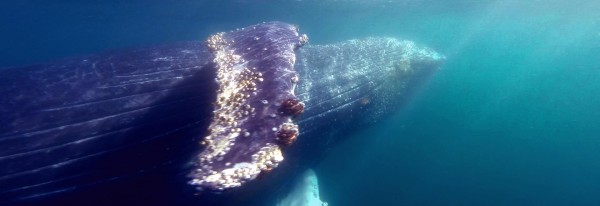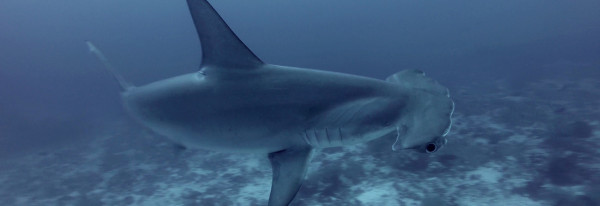The oceans have always held a powerful fascination for mankind, accounting for the fact that the history of diving may have started as early as 5,000 B.C., making it as old as human civilization itself. Even today, the sea holds so many secrets and it is doubtful that we will ever fully understand it.
“More people have walked on the moon than have been to the deepest place in the ocean.”
This statement by explorer Don Walsh describes perfectly how little we know about the sea – but as is the spirit of mankind, humans always try to satisfy their curiosity. In order to further explore the marvellous beauty of the sea, all those people who are brave enough to do so, share the need for reliable devices as without them, there would be no diving as we know it today. One of these devices is the diving watch.
Confronted with today’s overwhelming choice of dive watches, we might sometimes forget about the progress this special timepiece had to go through before it arrived at the point where it is today.
Compared to the time span that comprises the history of diving, the history of the diver’s watch seems ridiculously short. But being a mere hundred years in the making, the dive watch underwent an astonishing development, bringing it from a fragile novelty to a robust and reliable companion.
The very first diving watch
Nowadays, several big names of the watch industry claim to have been the first to develop a dive watch and so far no agreement has been reached. Rolex insists on having invented “the first waterproof and dustproof wristwatch [which] marked a major step forward” while Blancpain declares the year 1953 the “creation of the first modern diver’s watch” thanks to its Fifty Fathoms and Omega boasts about having “created the first true dive watch.
But let us have a look at the facts:
Although the first efforts to waterproof watches were already made in the 17th century, no real progress was made until three centuries later. In the beginning of the 20th century, water was still one of the biggest enemies of the watch (together with dust, shock, magnetic fields, and general abrasion).
Then Hans Wilsdorf appeared on the scene of the watch industry – the founder of Rolex, who would play a remarkable role in the development of the dive watch – and changed the course of history – it could be called the genesis of the modern diving watch. In 1926, the ambitious genius developed a wristwatch that was waterproof as well as dustproof thanks to its winding crown, bezel, and case back that could be screwed down against the middle case, heralding a new era: a century of unstoppable development that finally lead to the wide range of watches that accompany divers to the most spectacular and mysterious parts of the oceans.
This watch named Oyster – the forefather of today’s famous Rolex Oyster collection – was put to the test on 7 October 1927 when British endurance swimmer Mercedes Gleitze who attempted to cross the English Channel. During this daring swim, she wore the Rolex Oyster on a chain around her neck. The public was certainly surprised when the watch not only survived more than 10 hours in the freezing water, but still worked with a precision and accuracy that was astonishing, making it the first water-resistant watch in history.
Great minds think alike: Omega, Panerai, and Blancpain
Omega SA was the first company to industrially produce and commercially distribute a diving watch in 1932. Being the predecessor of today’s successful Seamaster collection, the Omega Marine was tested on the wrist of Charles William Beebe, a famous naturalist and explorer, and survived a water depth of 14 metres.
In 1935, at request of the Royal Italian Navy, Officine Panerai joins the ranks of those who dedicated themselves to creating the perfect dive watch and starts developing its own waterproof watch – the Panerai Radiomir. Its name derives from the radium-based powder that gives the numerals and markers of this watch its luminosity. Back then, only ten prototypes of the watch were made – all of them equipped with a Rolex movement that was protected from water with a case back and winding crown that could be both screwed down.
Two years after equipping the Royal Italian Navy with this water-resistant watch, Officine Panerai started mass-producing the Panerai Radiomir, which is today considered to be the first underwater military watch worldwide.
The well-established watch manufacturer Blancpain was not one to be left out in this race for the best water-resistant watch. In 1953, a watch was launched at the request of the French Navy: the Fifty Fathoms. This watch – one of the first timepieces waterproof up to 100 metres – can also be seen on the wrists of Jacques Cousteau and his team in the famous underwater film “Le monde du silence” (“The Silent World”).
The success story continues: Rolex dive watches in the 20th century
Rolex took another step forward when the Rolex Submariner was presented in 1953 – the first watch impressing with a water-resistance of up to 100 metres. This number would later increase to 200 metres and finally to 300 metres. Additionally, the Submariner is equipped with a uni-directional rotatable bezel, making it ideal and safe for measuring diving time.
The Rolex Submariner collection rose to fame, when it was featured in a number of James Bond movies, e.g. on the wrist of Sean Connery in “Dr. No”, the very first film about the British Secret Service agent. Ian Fleming, the author of the James Bond book series, stated about the spy: “He could not just wear a watch. It had to be a Rolex.”
The French company COMEX (Compagnie Maritime d’Expertises) – a pioneer in saturation diving – let Rolex equip its divers with the Rolex Submariner. From 1963 onwards, the Rolex Sea-Dweller was the company’s dive watch of choice because of its innovative case with the imperative helium escape valve and its waterproofness of up to 610 metres – or 2,000 feet, earning the watch the name Sea-Dweller 2000.
From this point, the development continues with an unprecedented speed:
In 1978, Rolex develops the Sea-Dweller 4000 with a water-resistance of 4,000 feet (1,220 metres). 30 years later, the Rolex Deepsea is created: a watch that can survive 3,900 metres (12,800 feet) under the surface – 100 deeper than the human body.
Rolex’ diving adventures
Only seven years after the launch of the Submariner, Rolex entered unknown territory. Aboard the submersible bathyscaphe “Trieste”, the aforementioned Don Walsh and the oceanographer Jacques Piccard set out in 1960 with the intention of exploring uncharted waters: they traveled to the deepest point of the ocean, the Challenger Deep at the southern end of the Mariana Trench. On their way to the ocean floor – to a terrifying depth of 10,916 metres (35,800 feet) – the two pioneers were accompanied by the Rolex Deep Sea Special strapped to the outside of the bathyscaphe. Having successfully completed the adventure, Jacques Piccard sent a telegram to the Rolex headquarters that read: “Happy to announce that your watch works as well at 11,000 metres as it does on the surface.”
Half a century later, the next expedition gets under way, making 26 March 2012 a historic day for the world of diving: James Cameron sets out for the world first solo dive to the Mariana Trench – the first manned dive since the adventure of Don Walsh and Jacques Piccard. All alone in the submersible Deepsea Challenger, the famous film director is only accompanied by the experimental watch Rolex Deepsea Challenge on the outside of the boat. Reaching an incredible depth of 12,000 metres, Cameron and the Rolex watch go down in the annals of history.
Dive computers: the future is now
Dive computers (personal decompression computers, decompression meters) first arose in 1957 and have since then partly replaced the separate equipment needed for dives.
In the development of this device, the Finnish company Suunto holds a special position: founded in 1936, it started its success story with the distribution of liquid-filled compasses and half a century later, the first dive computer was launched: the Suunto SME-ML. Merely a decade passed until these essential devices reached the size we know today.
However, the dive computer has not superseded the diving watch – nor will it in the foreseeable future. Today, the diver’s watch is as reliable and popular as never before and the innovative drive of the watch manufacturers is in full swing. Their accuracy and functionality as well as their elegance is ever increasing, making the diving watch the ideal companion both under water and on land.
Top 6 dive watches today
The Rolex Submariner is probably the best-known dive watch – and not only for being worn by James Bond. The iconic design combined with the extraordinary quality that made Rolex famous makes for a reliable wristwatch water-resistant to 300 metres.
But the “Sub” is not the only celebrated dive watch by Rolex: the Sea-Dweller and its more expensive sister model, the Rolex Deepsea, are every bit as reliable and precise as the Submariner.
Having created the first modern dive watch, Blancpain has outdone itself with every Fifty Fathoms watch it has launched since presenting the first model in 1953. This collection of dive watches features a wide range of different designs, offering the right watch for everyone.
Paying tribute to the original Breitling Superocean, the Superocean Héritage is a popular choice for divers. The choice of different models – all of them equipped with a COSC-certified movement – of this collections satisfies every taste.
Its angular case makes the legendary Panerai Radiomir collection easily recognisable. But Officine Panerai has another ace up its sleeve: the dive watch Panerai Luminor is younger than the Radiomir, but that does not take away from its continuous success – especially after being seen on Sylvester “Sly” Stallone’s wrist in the movie “The Expendables”.
Introduced in 1967, the IWC Aquatimer has been reinvented numerous times and several special editions have been launched. The innovative IWC SafeDive System as well as a separate internal and external bezel make diving even safer.
Finally, the Oris ProDiver must not be forgotten. The version Oris ProDiver Date outperforms all watches for amateurs and aims directly at professional divers. Equipped with the Oris Rotation Safety System, this dive watch will never let its wearer down.
An honorable mention goes to: Suunto. Even though the Finnish company does not technically produce dive watches, no such list would be complete without a word about Suunto – especially as there is a whole range of watch-sized dive computers.



